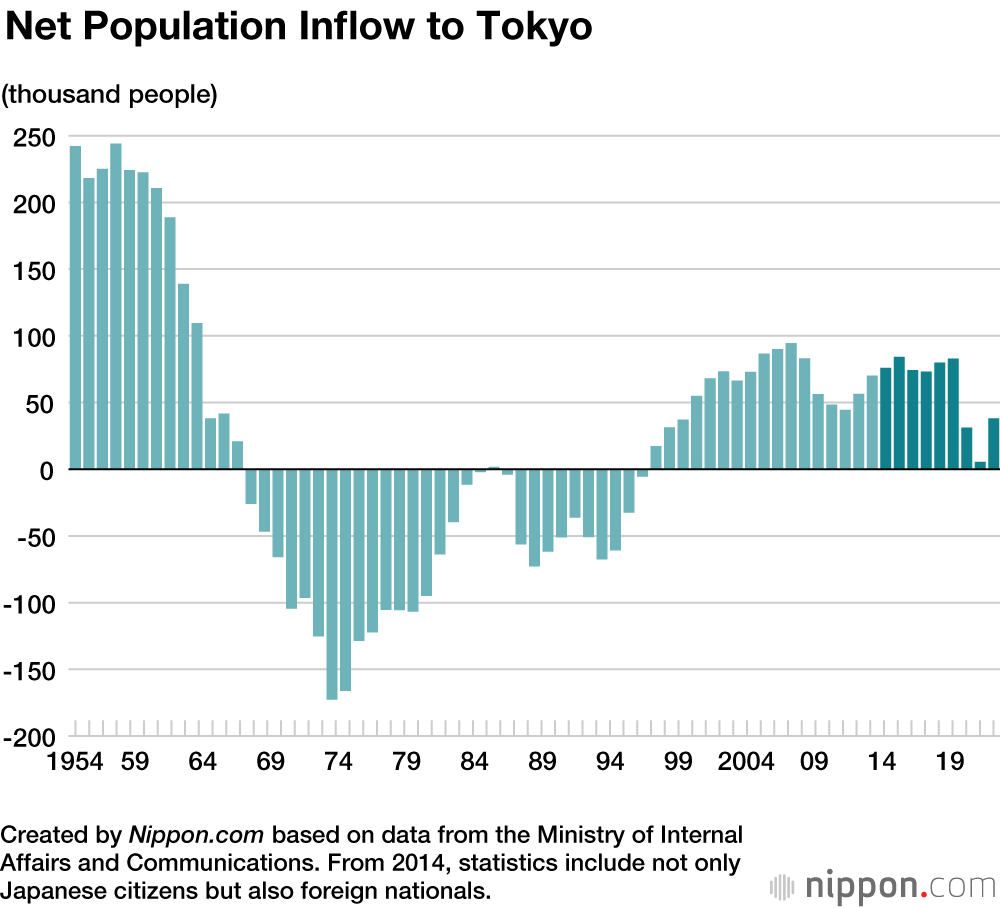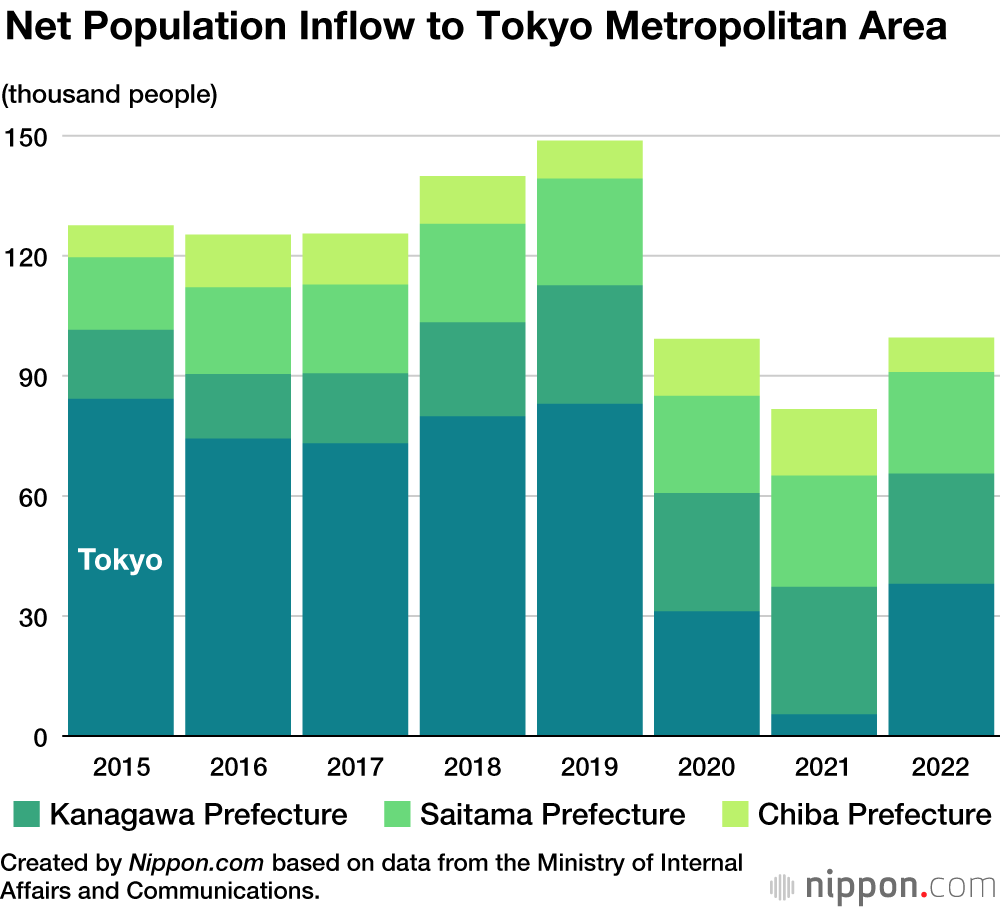
Tokyo Draws in More New Residents as Pandemic Restrictions Subside
Society- English
- 日本語
- 简体字
- 繁體字
- Français
- Español
- العربية
- Русский
A 2022 Ministry of Internal Affairs and Communications report on population movement within Japan, based on information from the Basic Resident Register, showed that 38,023 more people moved into Tokyo than moved out. This was a major rise from the net inflow of 5,433 in 2021, and the capital’s appeal as a place to live seems to have risen with the easing of COVID-19 restrictions and a comparative return to normal. In 2021, central Tokyo’s 23 municipalities registered a net outflow of 14,828, but in 2022 there was a net inflow of 21,420.
The government’s Comprehensive Strategy for Regional Revitalization had set a goal of halting the net inflow to the Tokyo metropolitan area from other parts of Japan for the five-year period from 2015, but little progress was made during that time. When the COVID-19 pandemic struck in 2020, encouraging the adoption of remote work and reconsideration of lifestyles, it appeared that overconcentration in Tokyo might ease, but expectations of change did not last long.
The Tokyo metropolitan area (Tokyo, Saitama, Chiba, and Kanagawa Prefectures) had a net inflow of 99,519 residents, an increase of 17,820 over the previous year. Meanwhile, the Nagoya area (Aichi, Gifu, and Mie Prefectures) had a net outflow of 16,218 and the Osaka area (Osaka, Kyoto, Hyōgo, and Nara Prefectures) one of 2,347.
In total, 11 prefectures, including Tokyo, Kanagawa, Saitama, Osaka, and Fukuoka, had a net inflow of residents. Miyagi Prefecture’s net inflow was its first in seven years.
(Translated from Japanese. Banner photo © Pixta.)

